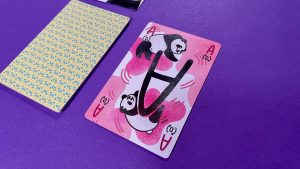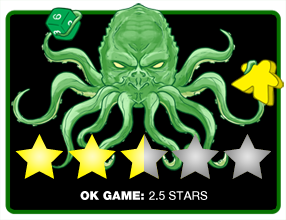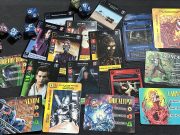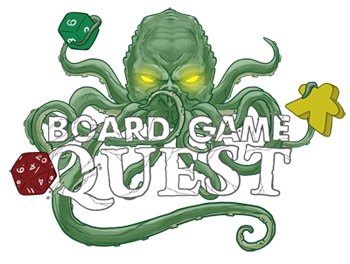 I’m starting to notice a trend in the types of themes in board games I’m gravitating to this year, and it looks like it’s all about animals! Panda Panda’s art and pocket-sized packaging were enticing, so when I found out that it could be a good filler game, I had to try it out. Most of my collection is full of meaty, lengthy games, and I’ve been more interested in discovering new, straightforward games to balance things out.
I’m starting to notice a trend in the types of themes in board games I’m gravitating to this year, and it looks like it’s all about animals! Panda Panda’s art and pocket-sized packaging were enticing, so when I found out that it could be a good filler game, I had to try it out. Most of my collection is full of meaty, lengthy games, and I’ve been more interested in discovering new, straightforward games to balance things out.
It’s a hand management card game for 2-4 players that takes about 15 minutes to play. The best experience is with 4 players for better tension and game momentum.
Gameplay Overview:
The goal of the game is to be the first player to reveal a winning hand, and if you win two rounds, you win the game. A winning hand is defined as having the exact letters needed based on the hand size you have, for example a three-card hand needs three “D” cards, while a six-card hand needs “A-A-C-C-E-E” or “B-B-C-C-D-D”. Once you have a winning hand at the start of your turn, you should “Panda Panda!” and reveal it to win the round.

While this may seem simple, the rules of the game make this process slightly more difficult. You can only draw or discard 1 card each turn, so the size of your hand changes as you play. In addition to this, whenever someone discards an A card, everyone must pass a card to the left.
If you discard a card, you place it in a personal, yet visible, discard pile in front of you. You cannot draw from any of your discard piles that have an A card on top of them, though. If you draw, you can take the top card on the deck or any player’s discard pile, including yours. There is no hand limit, but there are no winning hands larger than 7 cards.

Game Experience:
To be honest, while I enjoyed how quick and easy this was to get to the table, I still have no idea why it’s called Panda Panda other than the phrase you should shout when you have a winning hand. I actually tried looking at the publisher’s website to see if there is any lore to be had, and unfortunately, came up with nothing, so if anyone has answers, feel free to comment on this post and let me know. That being said, the panda art on the cards is adorable, and you can find pandas in all sorts of states of play, relaxation, and mischief. The cards themselves have a nice finish, and the colors are pleasant to look at.

As for gameplay, I enjoyed both the aspects of pushing your luck and the tension of the draw-then-discard loop. Requiring that a player win two rounds means that opponents can also become more incentivized to try and read what the leader is going for in order to thwart their efforts. Strategically adjusting to what cards are available in your hand and in the discard piles seems to be the most interesting aspect of the gameplay. While lower hand sizes means you are looking only for one specific letter, it also means that you’ll have a difficult time discarding enough times to get that lower hand size. Even if you did manage it, the game’s rule regarding discarding A cards can ruin a plan in an instant, but the beauty about this is you can wield that pain against your opponents as well if you think someone is getting too close to a winning hand.

Discard pile management is a minor but relatively important aspect of his card game, mostly in terms of making cards available to you but not necessarily to your opponents. The timing of being able to gauge what your opponents may be aiming for and whether you’ll have the opportunity to get a discarded card back into your hand is a fun challenge. I haven’t tried this yet, but I can imagine that using the discard as a storage space to avoid passing a precious card during the A-card discard effect could be fun.
Unfortunately, there are times when the game can feel too dependent on chance if there are no available discard piles to look through and all that is left is to draw from the deck. In a game where being able to cycle through cards quickly is key, low player count drags down the enjoyment factor quite a bit, so the two-player minimum is deceiving. I’m not a hardcore card gamer myself, but I can definitely see seasoned players not finding the gameplay as unique as I did, which would make convincing those players to choose it at a game night more difficult and thus not get to that sweet spot of four players.
Final Thoughts:
Panda Panda is for all gamers looking for a quick card game to play that has the right amount of player tension and time investment. Anyone who is new to card games in general will also have a straightforward and relatively easy time learning this game straight out of the rules page.
However, players looking for a bite-sized challenge may be disappointed as much of the gameplay can depend on chance and varies greatly at lower player counts. Seasoned card game players may also think that the gameplay itself is not unique enough to warrant adding it to their collections.
Final Score: 2.5 Stars – Race to win two rounds in this hand management card game focusing on drawing and discarding strategically.
 Hits:
Hits:
• Quick to learn and play
• Fun exercise in pushing luck
• Player tension encourages replay
Misses:
• Can be too dependent on chance
• Not as enjoyable at low player count
• Gameplay may not feel unique





















